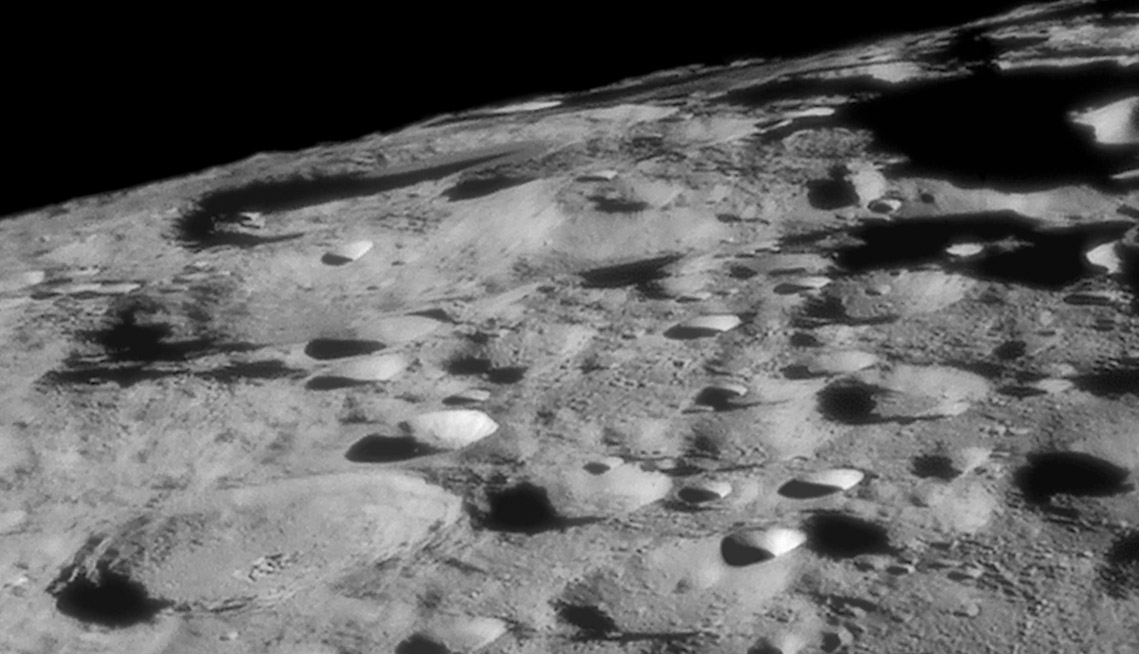Difference between revisions of "February 13, 2009"
| Line 1: | Line 1: | ||
__NOTOC__ | __NOTOC__ | ||
=Beyond the Polar Explorers= | =Beyond the Polar Explorers= | ||
| − | |||
<!-- ws:start:WikiTextHeadingRule:2:<h1> --> | <!-- ws:start:WikiTextHeadingRule:2:<h1> --> | ||
<!-- ws:start:WikiTextLocalImageRule:8:<img src="/file/view/LPOD-Feb13-09.jpg/57715866/LPOD-Feb13-09.jpg" alt="" title="" style="width: 900px;" /> -->[[File:LPOD-Feb13-09.jpg|LPOD-Feb13-09.jpg]]<!-- ws:end:WikiTextLocalImageRule:8 --><br /> | <!-- ws:start:WikiTextLocalImageRule:8:<img src="/file/view/LPOD-Feb13-09.jpg/57715866/LPOD-Feb13-09.jpg" alt="" title="" style="width: 900px;" /> -->[[File:LPOD-Feb13-09.jpg|LPOD-Feb13-09.jpg]]<!-- ws:end:WikiTextLocalImageRule:8 --><br /> | ||
| − | <em>image by [mailto:slamm@blueyonder.co.uk Stefan Lammel ]</em><br /> | + | <em>image by [mailto:slamm@blueyonder.co.uk" rel="nofollow Stefan Lammel ]</em><br /> |
<br /> | <br /> | ||
| − | The south polar region of the Moon provides perhaps the most dramatic celestial landscape that can be observed through a telescope. Tall mountains that ring the South Pole-Aitken Basin jut up into the sky, and deep craters cast dark shadows across their floors. The compression of the landscape through foreshortening makes identification of features difficult, even on a fantastic image such as this. The Tycho-like crater at lower left is Schomberger and a [http://www.lpod.org/?m=20071221 previous] LPOD identifies other craters in the area. The massive mountain near the middle is Leibnitz Beta and to its left is the ill-formed Scott. Beyond Scott is a broad flat-floored crater with a tapering shaft of shadow - that is Amundsen, and the smaller bright crater beyond seems to be the farside feature Idelson L. To the right of L and on the limb a rim casts a narrow curved shadow for another flat-floored crater that has no designation according to Rükl map V. Coming in from the right side of this crater is a bright rim with the floor in shadow. This is Faustini, a possible target for the [http://lcross.arc.nasa.gov/ LCROSS] collisional probe on the Lunar Reconnaissance Orbiter, [http://www.nasawatch.com/archives/2009/02/the_lro_launch.html now] apparently to be launched in May, 2009. <br /> | + | The south polar region of the Moon provides perhaps the most dramatic celestial landscape that can be observed through a telescope. Tall mountains that ring the South Pole-Aitken Basin jut up into the sky, and deep craters cast dark shadows across their floors. The compression of the landscape through foreshortening makes identification of features difficult, even on a fantastic image such as this. The Tycho-like crater at lower left is Schomberger and a [http://www.lpod.org/?m=20071221" rel="nofollow previous] LPOD identifies other craters in the area. The massive mountain near the middle is Leibnitz Beta and to its left is the ill-formed Scott. Beyond Scott is a broad flat-floored crater with a tapering shaft of shadow - that is Amundsen, and the smaller bright crater beyond seems to be the farside feature Idelson L. To the right of L and on the limb a rim casts a narrow curved shadow for another flat-floored crater that has no designation according to Rükl map V. Coming in from the right side of this crater is a bright rim with the floor in shadow. This is Faustini, a possible target for the [http://lcross.arc.nasa.gov/" rel="nofollow LCROSS] collisional probe on the Lunar Reconnaissance Orbiter, [http://www.nasawatch.com/archives/2009/02/the_lro_launch.html" rel="nofollow now] apparently to be launched in May, 2009. <br /> |
<br /> | <br /> | ||
| − | <em>[mailto:tychocrater@yahoo.com Chuck Wood]</em><br /> | + | <em>[mailto:tychocrater@yahoo.com" rel="nofollow Chuck Wood]</em><br /> |
<br /> | <br /> | ||
<strong>Technical Details</strong><br /> | <strong>Technical Details</strong><br /> | ||
| Line 15: | Line 14: | ||
<strong>Related Links</strong><br /> | <strong>Related Links</strong><br /> | ||
Rükl plate [http://the-moon.wikispaces.com/Rukl+73 73]<br /> | Rükl plate [http://the-moon.wikispaces.com/Rukl+73 73]<br /> | ||
| − | Stefan's entire [http://www.pbase.com/image/109091621/original mosaic]<br /> | + | Stefan's entire [http://www.pbase.com/image/109091621/original" rel="nofollow mosaic]<br /> |
<br /> | <br /> | ||
<hr /> | <hr /> | ||
Revision as of 18:04, 4 January 2015
Beyond the Polar Explorers

image by " rel="nofollow Stefan Lammel
The south polar region of the Moon provides perhaps the most dramatic celestial landscape that can be observed through a telescope. Tall mountains that ring the South Pole-Aitken Basin jut up into the sky, and deep craters cast dark shadows across their floors. The compression of the landscape through foreshortening makes identification of features difficult, even on a fantastic image such as this. The Tycho-like crater at lower left is Schomberger and a " rel="nofollow previous LPOD identifies other craters in the area. The massive mountain near the middle is Leibnitz Beta and to its left is the ill-formed Scott. Beyond Scott is a broad flat-floored crater with a tapering shaft of shadow - that is Amundsen, and the smaller bright crater beyond seems to be the farside feature Idelson L. To the right of L and on the limb a rim casts a narrow curved shadow for another flat-floored crater that has no designation according to Rükl map V. Coming in from the right side of this crater is a bright rim with the floor in shadow. This is Faustini, a possible target for the " rel="nofollow LCROSS collisional probe on the Lunar Reconnaissance Orbiter, " rel="nofollow now apparently to be launched in May, 2009.
" rel="nofollow Chuck Wood
Technical Details
6-Jan-09 20:30UT. 10in f4.8 Newtonian, Infinity 2-1M, 5x PowerMate, green filter, Avistack, Registax, PSE 5, Focus Magic.
Related Links
Rükl plate 73
Stefan's entire " rel="nofollow mosaic



